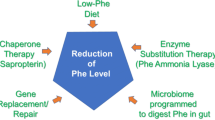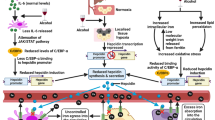Abstract
The profound metabolic disturbances which occur in isovaleric acidaemia are due to the intramitochondrial accumulation of isovaleryl coenzyme A (CoA) with a consequent reduction in the availability of free CoA. Secondary carnitine insufficiency is also a feature of this and other disorders of organic acid metabolism. A patient who presented at 2.5 years of age was diagnosed using capillary GC-MS as having isovaleric acidaemia. She showed the full spectrum of abnormal organic acids previously associated with the ‘neonatal’ form of the disease despite her late presentation, indicating that it is inappropriate to refer to acute early and late onset forms of isovaleric acidaemia. Instead, a spectrum of disease exists, determined by environmental factors, residual enzyme activities and modifying effects of different phenotypes in different individuals. She also showed evidence of carnitine insufficiency. An oral challenge with l-carnitine resulted in the excretion of large amounts of urinary acylcarnitines which were shown by use of fast atom bombardment mass spectrometry to be primarily isovalerylcarnitine. Regular glycine supplementation caused no significant increase in urinary isovaleryglycine and had to be stopped because of side-effects after 5 days. An oral l-carnitine challenge during glycine supplementation resulted in a marked increase in isovalerylglycine excretion, again associated with the excretion of large amounts of isovalerylcarnitine. Carnitine acts by removing (detoxifying) intramitochondrial isovaleryl groups and, in the presence of glycine, it promotes the formation of isovalerylglycine. We believe l-carnitine supplementation is of value in the treatment of isovaleric acidaemia and that, in the present case, l-carnitine together with a moderate dietary restriction has proved to be the optimum form of therapy.
Similar content being viewed by others
Abbreviations
- CoA:
-
Coenzyme A
- TMS:
-
trimethylsilyl
- S.D.:
-
standard deviation
- DEAE:
-
diethylaminoethyl
- FAB:
-
fast atom bombardment
References
Ando T, Klingberg WG, Ward AN, Rasmussen K, Nyhan WL (1971) Isovaleric acidemia presenting with altered metabolism of glycine. Pediatr Res 5:478–486
Bartlett K, Gompertz D (1974) The specificity of glycine-N-acylase and acylglycine excretion in organicacidaemias. Biochem Med 10:15–23
Budd MA, Tanaka K, Holmes LB, Efron ML, Crawford JD, Isselbacher KJ (1967) Isovaleric acidemia. Clinical features of a new genetic defect of leucine metabolism. N Engl J Med 277:321–327
Cederblad G, Lindstedt S (1972) A method for the determination of carnitine in the picomole range. Clin Chim Acta 37:235–243
Chalmers RA, Lawson AM (1982) Organic acids in man. The analytical chemistry, biochemistry and diagnosis of the organic acidurias. Chapman and Hall, London New York
Chalmers RA, Roe CR, Tracey BM, Stacey TE, Hoppel CL, Millington DS (1983) Secondary carnitine insufficiency in disorders of organic acid metabolism: modulation of acyl-CoA/CoA ratios by l-carnitine in vivo. Biochem Soc Trans 11:724–725
Chalmers RA, Roe CR, Stacey TE, Hoppel CL (1984) Urinary excretion of l-carnitine and acylcarnitines by patients with disorders of organic acid metabolism: evidence for secondary insufficiency of l-carnitine. Pediatr Res 18:1325–1328
Cohn RM, Yudkoff M, Rothman R, Segal S (1978) Isovaleric acidemia: use of glycine therapy in neonates. N Engl J Med 2:996–999
Duran M, van Sprang FJ, Drewes JG, Bruinvis L, Ketting D, Wadman SK (1979) Two sisters with isovaleric acidaemia, multiple attacks of ketoacidosis and normal development. Eur J Pediatr 131:205–211
Guibaud P, Divry P, Dubois Y, Collombel C, Larbre F (1973) Une observation d'acidemie isovalerique. Arch Fr Pediatr 30:633–645
Kelleher JF, Yudkoff M, Hutchinson R, August CS, Cohn RM (1980) The pancytopenia of isovaleric acidemia. Pediatrics 65:1023–1027
Krieger I, Tanaka K (1976) Therapeutic effects of glycine in isovaleric acidemia. Pediatr Res 10:25–29
Newman CGH, Wilson BDR, Callaghan P, Young L (1967) Neonatal death associated with isovalericacidaemia. Lancet ii: 439–442
Roe CR, Hoppel CL, Stacey TE, Chalmers RA, Tracey BM, Millington DS (1983) Metabolic response to carnitine in methylmalonic aciduria. Arch Dis Child 58:916–920
Shigematsu Y, Sudo M, Momoi T, Inoue Y, Suzuki Y, Kameyama J (1982) Changing plasma and urinary organic acid levels in a patient with isovaleric acidemia during an attack. Pediatr Res 16:771–775
Spirer Z, Swirsky-Fein S, Zakut V, Legum C, Bogair N, Charles R, Gil-Av E (1975) Acute neonatal isovaleric acidemia. A report of two cases. Isr J Med Sci 11:1005–1010
Tanaka K, Budd MA, Efron ML, Isselbacher KJ (1966) Isovaleric acidemia: a new genetic defect of leucine metabolism. Proc Natl Acad Sci USA 56:236–242
Tanaka K, Orr JC, Isselbacher KJ (1968) Identification of β-hydroxyisovaleric acid in the urine of a patient with isovaleric acidemia. Biochim Biophys Acta 152:638–641
Wysocki SJ, French NP, Grauaug A (1983) Organic aciduria associated with isovaleric acidemia. Clin Chem 29:1002–1003
Yudkoff M, Cohn RM, Puschak R, Rothman R, Segal S (1978) Glycine therapy in isovaleric acidemia. J Pediatr 92:813–817
Author information
Authors and Affiliations
Rights and permissions
About this article
Cite this article
de Sousa, C., Chalmers, R.A., Stacey, T.E. et al. The response to l-carnitine and glycine therapy in isovaleric acidaemia. Eur J Pediatr 144, 451–456 (1986). https://doi.org/10.1007/BF00441737
Received:
Accepted:
Issue Date:
DOI: https://doi.org/10.1007/BF00441737




